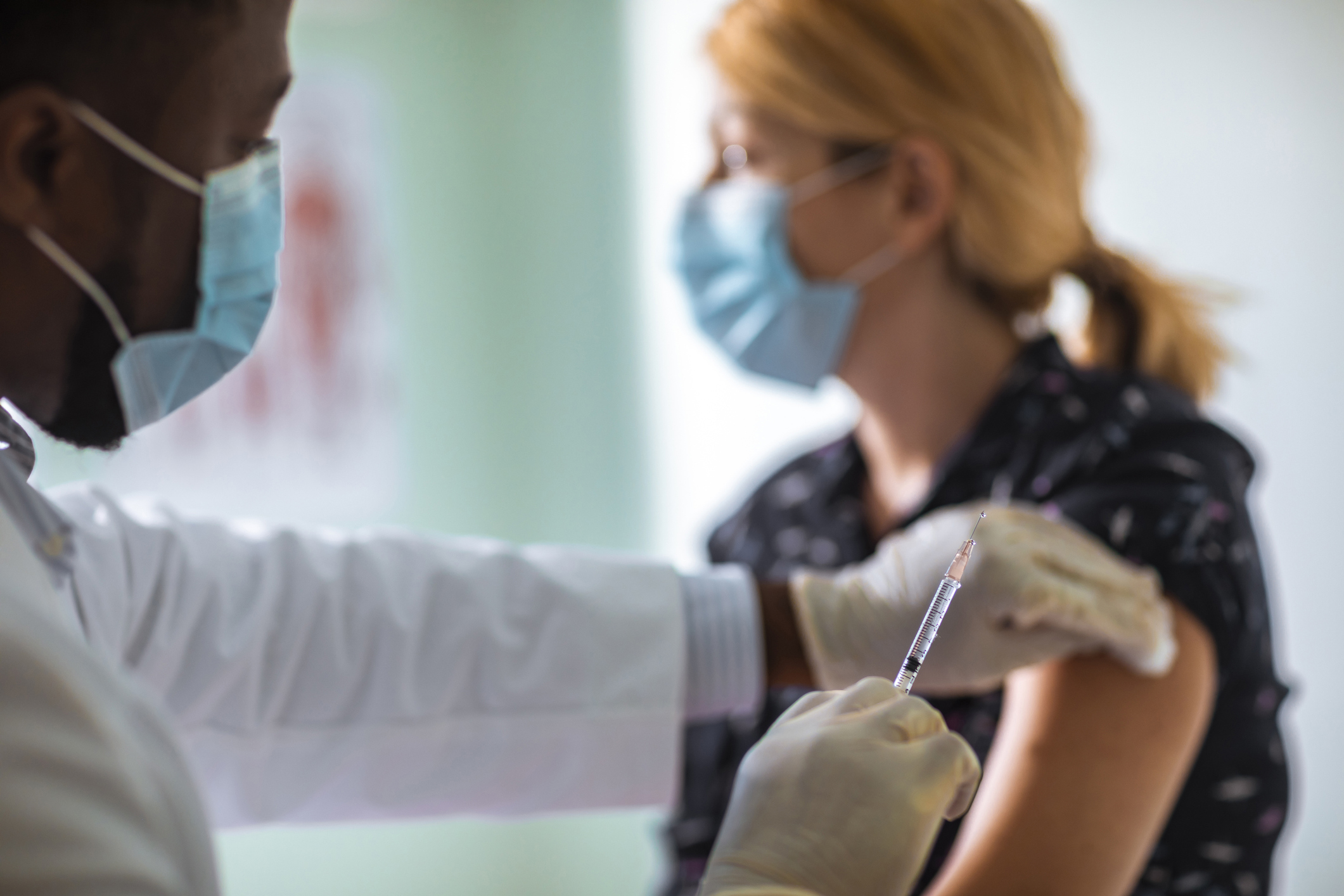There was a new vaccinator in the clinic, a first-year medical student hovering nervously in the corner of the room. “Have you done this before?” I asked. She shook her head no.
All around us, noise echoed off the tiled walls and wood floor of the elementary school gymnasium, the indistinct hum of voices, scrape of chairs and clatter of a community vaccine clinic in full swing. By the end of the evening, we would see hundreds of patients for their first or second COVID vaccine doses. All the other vaccinators were already set up, working steadily to keep up with the flow of patients.
As a more senior medical student, I had been giving COVID vaccines for several months. Long enough for the shine of volunteering during a national crisis to wear off, long enough for the whole process to feel a bit rote and routine. “Follow me,” I said, and led her over to my station, where I’d set out the materials in sequence: gloves, alcohol swab, gauze pad, Band-Aid, and “I got my COVID vaccine” sticker. I showed her how to hold the syringe. Rolling up the sleeve of my scrubs, I pointed out the anatomical landmarks on my own body. We both introduced ourselves to the next patient, and she watched me give a vaccine.
Then it was her turn to sit in the vaccinator’s chair. Wide-eyed, she cleaned the patient’s arm with alcohol, and darted the needle in quickly like I showed her. Gauze, Band-Aid, sticker, and then it was done.
“I was so nervous,” she said once the patient had left. “I didn’t want to hurt him.”
I reassured her and watched her with another patient. Already she was more confident, making small talk in Spanish about their shared love of Lima, Peru. The ordinary ritual — the alcohol swab, the needle, the gauze, the Band-Aid, the sticker — seemed suddenly poignant.
In everyday life, there are many boundaries we do not cross. We do not ask strangers about their intimate relationships, traumas and existential fears. We avert our eyes from nudity. We do not knowingly cause others pain. Medicine, by necessity, disrupts these boundaries. Becoming a physician means learning how to cross them with grace, humility and respect for the patient’s trust. These days, it is the norm in medical education to set aside time to mark the large moments of boundary crossing. The first day of the anatomy course at Hopkins is accompanied by a guided reflection on emotions evoked by working with a cadaveric donor. In the clinical years, there is an entire simulation devoted to delivering bad news. But, as the noises of the clinic echoed around me, I understood that smaller, quieter, more routine moments of boundary crossing — like the one represented by the punctured barrier of the skin, the minor procedure of vaccination — are no less important.
“How am I doing?” the first-year medical student asked before the next patient sat down.
“You’re doing great,” I said. “Really great.”
Related Content
- Divergence in Coronavirus Opinions
- Anti-Vax to Anti-Mask: Processing Anti-Science Claims During a Pandemic
- Vaccine Season in Full Swing
- On the Front Lines: From Coronavirus Vaccine Trial to Distribution
Want to read more from the Johns Hopkins School of Medicine? Subscribe to the Biomedical Odyssey blog and receive new posts directly in your inbox.
